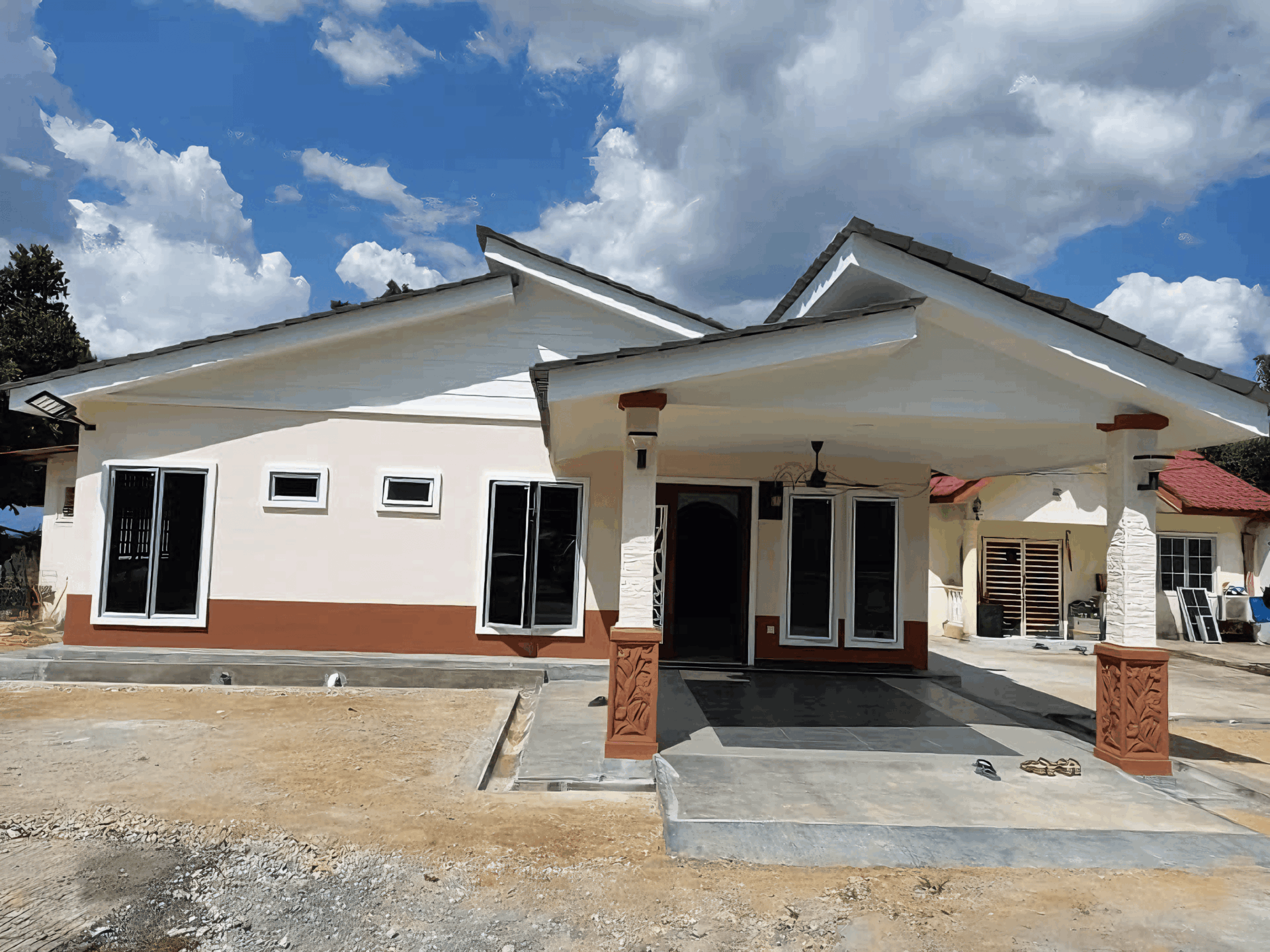Title: Building the Future: How Malaysian Construction Firms are Embracing Technology & Innovation
Hey there! Ever wondered how our construction industry is evolving? Well, buckle up, because we’re about to dive into the exciting world where bricks meet bytes! In Malaysia, the construction sector has seen a remarkable shift, moving beyond traditional methods and stepping into a realm filled with cutting-edge technology and innovative practices. From smart buildings to drone surveys, our local firms are not just laying foundations; they’re laying the groundwork for a smarter, more efficient future. So, grab a cup of kopi, and let’s explore how these construction warriors are using tech to not only construct buildings but also reshape the landscape of our cities!
The Digital Transformation Journey of Malaysian Construction Firms
As more Malaysian construction firms explore the digital landscape, they are unlocking unprecedented efficiencies and innovation. BIM (Building Information Modeling) has become a cornerstone in project management, offering real-time collaboration and visualization. This technology not only streamlines design processes but also augments communication among stakeholders, reducing project delays and enhancing transparency. Companies are increasingly adopting mobile applications and cloud services to ensure that their workforce stays connected, enabling seamless sharing of data and resources on the go.
Moreover, construction firms are harnessing IoT (Internet of Things) capabilities to monitor site conditions, manage machinery, and track materials in real-time. By integrating sensors and smart devices, businesses can collect valuable data that informs decision-making, ultimately leading to reduced wastage and cost management. The integration of drones in surveying and inspection tasks also exemplifies innovation in this sector, providing high-resolution aerial imagery and streamlining site assessments while ensuring safety and accuracy.
With sustainability becoming a pivotal focus, many firms are investing in green technologies that align with global sustainability goals. From energy-efficient building materials to waste reduction technologies, construction firms are not just modernizing their practices but are also committing to a sustainable future. Here’s a quick look at some of the innovative technologies shaping the Malaysian construction landscape:
| Technology | Benefits |
|---|---|
| BIM | Enhanced collaboration and fewer errors |
| IoT | Real-time monitoring and resource management |
| Drones | Efficient surveying and safety compliance |
| Green Technologies | Reduction in carbon footprint |

Integrating Building Information Modeling for Enhanced Project Management
In the fast-paced world of construction, Building Information Modeling (BIM) is proving to be a game-changer for project management in Malaysia. By integrating BIM into their workflow, construction firms can visualize the entire project lifecycle, from initial design to completion. This powerful tool allows teams to collaborate effectively, minimizing errors and ensuring that everyone is on the same page. When the architectural, structural, and MEP (mechanical, electrical, and plumbing) components are brought together in a cohesive model, it leads to enhanced communication and streamlined processes.
One of the best aspects of BIM is its ability to foster collaboration across various disciplines. Through the use of shared digital platforms, construction teams can engage in real-time discussions, share insights, and make informed decisions promptly. This not only enhances the quality of the final outcomes but also reduces costs associated with conflicts and misunderstandings later in the project. Features like clash detection help identify potential issues before they become costly problems, keeping projects on schedule and within budget.
To give you a clearer perspective, here’s a quick overview of how BIM adds value to Malaysian construction firms:
| Benefits of BIM | Description |
|---|---|
| Enhanced Visualization | Creates a 3D representation for better understanding. |
| Improved Collaboration | All stakeholders can access the same data seamlessly. |
| Cost Efficiency | Reduces waste and allows for better resource allocation. |
| Time Savings | Identifies potential delays early in the planning phase. |
By leveraging these advantages, Malaysian construction firms are not just keeping up with global standards, but they are also laying the groundwork for future advancements. The integration of BIM is pushing the envelope in terms of innovation, reshaping the construction landscape in Malaysia for the better. With ongoing training and investment in technology, companies can expect to see significant improvements in project outcomes, paving the way for a more efficient and collaborative construction industry.

Harnessing Drones for Site Surveys and Progress Monitoring
In recent times, Malaysian construction firms have been revolutionizing the way they conduct site surveys and monitor project progress by integrating drone technology into their workflows. Drones, equipped with advanced imaging capabilities, allow companies to capture high-resolution aerial images and generate precise topographical maps. This level of detail is crucial, enabling surveyors to identify potential issues early on, thereby minimizing costly delays. With the ability to cover large areas in a fraction of the time it would take using traditional methods, drones are quickly becoming indispensable tools on construction sites.
One of the standout features of drone technology is its real-time data collection abilities. Companies can gather and analyze site data instantaneously, making informed decisions that enhance efficiency and productivity. Key benefits include:
- Improved Safety: Reducing the need for workers to navigate hazardous areas.
- Cost Efficiency: Lowering labor costs and minimizing resource wastage.
- Accurate Reporting: Providing reliable data to stakeholders without the risks associated with manual surveys.
Furthermore, the implementation of drone surveillance aligns perfectly with the current push towards sustainability in the construction industry. By optimizing material usage and reducing the environmental impact of frequent site visits, these aerial solutions contribute to greener practices. To showcase the impact of drone technology on project timelines, here’s a simple comparison table:
| Task | Traditional Method (Days) | Drone Method (Days) |
|---|---|---|
| Site Survey | 5-7 | 1-2 |
| Progress Monitoring | Every 2 Weeks | Weekly |

Smart Materials: Revolutionizing Construction Quality and Sustainability
In recent years, Malaysian construction firms have started to incorporate smart materials into their projects, leading to notable advancements in both quality and sustainability. These innovative materials are engineered to respond dynamically to environmental changes, which enhances the overall performance and lifespan of buildings. For instance, the introduction of self-healing concrete has become a game changer, significantly reducing the need for repairs and maintenance. This translates into lower costs and minimized waste, making it an environmentally friendly option.
Moreover, many firms are finding ways to integrate technology with these materials, using sensors and data analytics to monitor structural health in real-time. This fusion allows for proactive maintenance strategies that prevent small issues from becoming major problems, ensuring better safety and reliability. With smart coatings that can reflect heat, reduce energy consumption, and improve indoor air quality, the benefits extend beyond just durability. Here are some key advantages:
- Enhanced energy efficiency
- Reduced material waste
- Increased building lifespan
As more construction companies in Malaysia embrace these smart materials and the technology that supports them, the industry is shifting towards a more sustainable future. In fact, a recent survey revealed that 78% of firms are investing in sustainable materials, highlighting the growing awareness of environmental responsibility. By prioritizing innovation, firms are not only improving their competitive edge but also contributing positively to the global fight against climate change. The potential of smart materials could redefine what we expect from modern construction in the years to come.
| Smart Material | Benefits |
|---|---|
| Self-Healing Concrete | Reduces maintenance costs |
| Phase-Change Materials | Enhances energy efficiency |
| Smart Glass | Improves thermal performance |

The Role of Artificial Intelligence in Predictive Analytics and Decision Making
In the ever-evolving landscape of the Malaysian construction industry, the integration of artificial intelligence is not just a trend, but a necessity. Companies are leveraging AI to drive predictive analytics, allowing them to foresee project challenges and opportunities with remarkable accuracy. By analyzing vast amounts of data from previous projects, AI algorithms can identify patterns and trends that would be impossible for human analysts to discern in a timely manner. This data-driven insight empowers firms to make informed decisions, minimizing risks and optimizing resource allocation.
One of the most significant benefits AI brings to the table is its ability to enhance decision-making processes. Construction firms are utilizing AI tools to forecast project timelines and budget requirements more effectively. By tapping into real-time data, companies can adjust plans on the fly, ensuring they stay on track amidst uncertainties. Here’s how they’re doing it:
- Resource Management: AI helps in predicting the exact number of workers and materials needed.
- Cost Estimation: Machine learning algorithms analyze costs and suggest the most budget-friendly options.
- Site Safety: Predictive analysis identifies potential hazards, allowing for preventive measures.
Moreover, the role of artificial intelligence in predictive analytics empowers Malaysian construction firms to enhance collaboration among project stakeholders. By providing a central platform for data access, teams can easily share insights drawn from AI analytics, leading to improved communication and faster problem-solving. To illustrate the impact of AI in decision-making, here’s a simple table showing the differences in decision quality with and without AI:
| Aspect | Without AI | With AI |
|---|---|---|
| Data Analysis Time | Weeks | Days |
| Risk Identification | Manual Checks | Automated Alerts |
| Budget Accuracy | ±20% | ±5% |

Embracing Modular Construction for Increased Efficiency and Flexibility
Malaysia’s construction industry is witnessing a significant shift towards modular construction, a method that streamlines processes while enhancing flexibility. By breaking down projects into smaller, prefabricated sections, construction firms can boost production efficiency and reduce on-site assembly time. This innovative approach is particularly beneficial in a region where labor shortages and project delays have been persistent challenges.
With modular construction, companies can enjoy several key advantages:
- Cost Savings: Reduced material waste and rework lead to lower overall costs.
- Speed: Projects can be completed faster as multiple units are produced simultaneously in a controlled environment.
- Quality Control: Factory settings allow for better monitoring and management of building standards.
Through these benefits, Malaysian construction firms are not only meeting the increasing demand for housing and commercial spaces but also building resilience against unforeseen disruptions.
Furthermore, embracing modular approaches aligns with the growing trend towards sustainability in construction. By minimizing on-site activities, modular construction significantly reduces environmental impacts, such as noise and emissions. As regulations around sustainability tighten, these practices help firms remain compliant while appealing to eco-conscious clients. To illustrate this shift, here’s a quick summary of the potential impacts:
| Impact Area | Traditional Construction | Modular Construction |
|---|---|---|
| Time to Completion | Longer | Shorter |
| Waste Generated | Higher | Lower |
| Labor Costs | Increased | Decreased |
| Environmental Impact | Significant | Minimal |
In this rapidly changing landscape, it’s clear that the future of construction in Malaysia is set to become more efficient and adaptable. As firms continue to innovate and leverage modern technologies, they’re not just transforming their processes but are also setting new benchmarks for the entire industry. This holistic embrace of modular practices creates endless possibilities for growth and collaboration in a sector that is always evolving.

Training and Upskilling Workforce to Adapt to Technological Advances
In the rapidly evolving landscape of the construction industry, Malaysian firms are placing a strong emphasis on developing their workforce’s skills to meet the growing demands of technological advancements. Companies have started to invest significantly in training programs to ensure that their employees are well-equipped with the latest tools and techniques. This proactive approach not only boosts worker confidence but also enhances productivity and safety on site.
Many organizations have adopted a variety of training methods to cater to different learning styles and needs. These include:
- Workshops and Seminars: Live sessions with industry experts provide hands-on experience and in-depth knowledge on new technology.
- Online Courses: Flexible, self-paced learning modules allow workers to hone their skills without disrupting their work schedules.
- Mentorship Programs: Pairing junior staff with experienced professionals fosters a culture of sharing knowledge and best practices.
Furthermore, firms are increasingly utilizing technology to facilitate training and upskilling. For example, Virtual Reality (VR) simulations have emerged as an innovative way to train workers in a safe yet realistic environment. This technology allows workers to practice complex tasks without the risk of accidents. Below is a table highlighting some popular technologies that construction firms are leveraging for upskilling:
| Technology | Training Benefit |
|---|---|
| Virtual Reality | Realistic training scenarios |
| Drones | Mapping & surveying skills |
| Building Information Modeling (BIM) | Improved project planning and collaboration |

Building a Collaborative Ecosystem: Partnerships between Firms and Tech Startups
The synergy between established construction firms and emerging tech startups is reshaping the landscape of the Malaysian construction industry. By recognizing the potential of innovation, construction giants are increasingly seeking out partnerships with nimble startups that can offer fresh solutions to long-standing challenges. These collaborations allow firms to streamline operations, reduce costs, and enhance project delivery through cutting-edge technologies such as Building Information Modelling (BIM), drone surveying, and augmented reality visualizations.
For instance, firms now leverage data analytics from tech partners to improve project forecasting and risk management. Startups come equipped with expertise in software development and data science, enabling traditional construction companies to harness data insights that were previously unattainable. This partnership model places a premium on adaptability and encourages knowledge sharing, creating a win-win environment where both parties benefit from the exchange of ideas and skills.
Moreover, the benefits extend beyond technical efficiencies. By collaborating with startups, construction firms can foster a culture of innovation within their organizations, inspiring employees to think creatively and embrace new methods. This collaborative approach not only enhances the competitiveness of Malaysian firms in a global market but also contributes to the country’s economic growth. Tech startups, on the other hand, gain invaluable access to resources, networks, and mentorship, allowing them to thrive and experiment without the heavy financial burden typically associated with starting a business.
To Wrap It Up
As we wrap up this exploration of how Malaysian construction firms are stepping into the future with technology and innovation, it’s clear that we’re on the brink of a transformation like never before. From smart tools and sustainable practices to leveraging big data and AI, local companies are not just building structures; they’re constructing a smarter, more efficient future for the industry.
It’s exciting to think about the possibilities ahead! As these firms adapt and evolve, they’re not only enhancing their competitiveness but also paving the way for a more robust economy and a better working environment. So, whether you’re in the industry or just a curious observer, keep your eyes peeled! With so much happening, it’s a thrilling time to witness the rise of a tech-savvy construction scene in Malaysia.
Let’s continue to cheer on our homegrown talents as they embrace change and innovation—who knows what amazing projects will come next? Here’s to building a brighter future, one innovation at a time!
Source link
kontraktor rumah
bina rumah
pinjaman lppsa
pengeluaran kwsp
spesifikasi rumah
rumah batu-bata
pelan rumah
rekabentuk rumah
bina rumah atas tanah sendiri
kontraktor rumah selangor
rumah banglo




